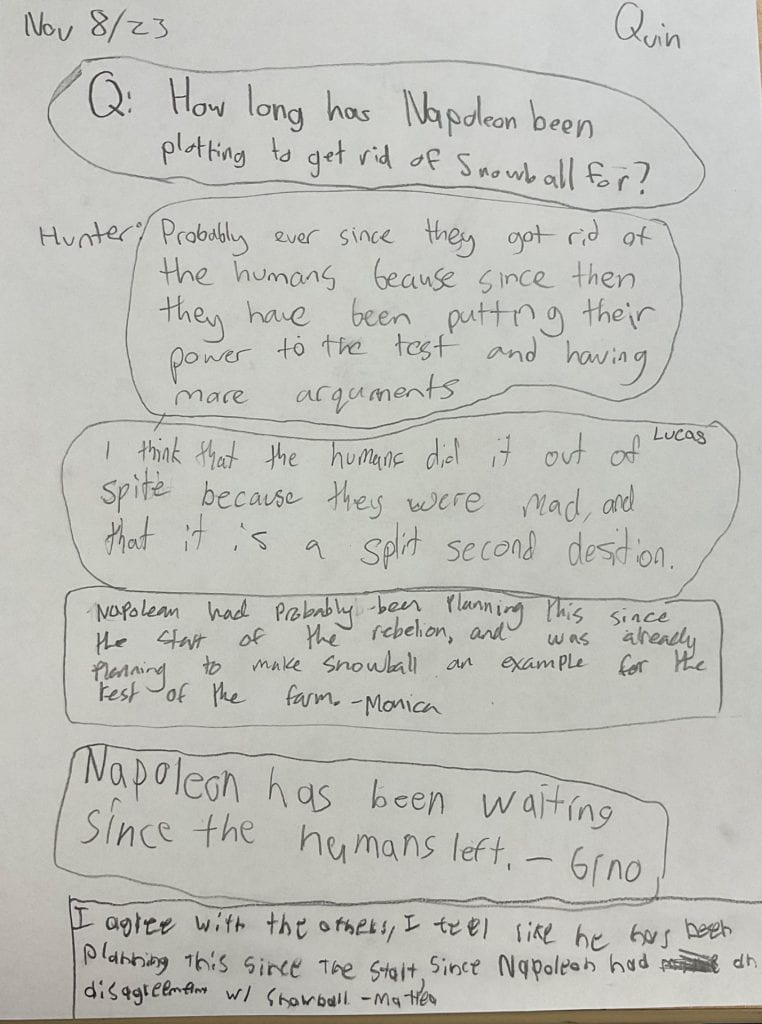You know what time of year it is! No it’s not Christmas time, silly! Well actually it is Christmas time, but that’s not what I meant (But, is it still Christmas time if this gets posted after Christmas? I don’t know🤦♂️). Alright, let me give that another try.
You read the title! Our PLP 9 winter exhibition just happened and it’s time to reflect upon it!
If you didn’t get to go, the PLP 9’s designed and created Rube Goldberg machines in which each connection was a metaphor for each group’s revolution. My group had the Haitian revolution, which is a very unknown revolution, especially in comparison to the other ones in the room.
Okay, but how did we get here? Our this project was actually a long time coming, as it started all the way back in October with a Nation X experiment. We were divided into four groups with differing amounts of people before learning the roles of each group. There was group A (The poor workers), group B (The business class), group C (The ‘police’), and Group D (The royal family). We played out about a week of ‘in game’ time (around 2 real life hours) where the lower classes became increasingly more unhappy with how the nation was being run, and in the end, revolted against the upper classes, and created a new nation taking over Nation X. Keep in mind this was before we knew what the project was about. We just happened to make a revolution at the start of a revolution project before we knew it was a revolution project! I actually didn’t make the connection that we’d made a revolution during that experiment until now, while I was writing this paragraph.
From there we started to learn about revolutions. We modernized Crane Brinton’s theory of a revolution using analogies as examples to demonstrate and simplify Crane’s theory. Crane Brinton’s theory is a common cycle including the four main stages of a revolution (Incubation, moderate, crisis, recovery). I used a seed growing into a tree on mine to show how a small seed of discontent can develop into a full blown revolution.

To help learn about revolutions, we read George Orwell’s Animal Farm which was based on the Russian revolution. In this book, the animals on a farm in the UK become displeased with their farmer, and they pretty much kick him out. I won’t spoil rest of the story if you want to read if for yourself. We had 5 book chats at intervals throughout the book where we had different prompts to liven up the discussions. An example of these prompts was to write a question about the book on a piece of paper and pass it around in a circle with everyone else writing their answer on it. This encouraged us to reflect on the book and to see other people’s opinions and thoughts about it.

After that, we were given one revolution to become an expert on. As I mentioned earlier, mine was the Haitian revolution. The first task was to make an infographic with a lot of information about the Haitian revolution and demonstrate how it fits into Crane Brinton’s theory of a revolution.

It’s Rube Goldberg time! Well, sorta. We have to conceptualize our machine before we can build it. We started by writing down some events from the revolution we could use as metaphors. Then, we came up with ideas for connections that we could use on our machine based off of the events.

Another thing we had to do before actually building the machine was to plan our documentary that we showed alongside our machine at the exhibition so that we could film while building. This documentary showed the building process for our machine, as well as some other theatrical additions.
Okay. Now can we build? Finally! We gathered our materials, most of which were old household objects and cardboard, and over the next week and a half, we put it all together. But, the building process wasn’t very smooth. I think our group was full of leaders with not enough listeners. There was a lot of miscommunication and disagreements, and unfortunately, we never got a completed successful run through.
Despite the lack of a working machine, we still presented at the exhibition. We had an entire script written, but a last minute decision was made to ditch the scripts. It was too unnatural, and it would be better just to talk than to read. At the start, I was doing a lot of umming and forgetting what some things meant, but by the end, I was pretty confident with what I was saying, and I was able to explain the metaphors in the machine and the progress of the Haitian revolution.
